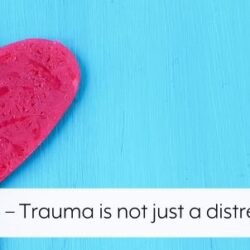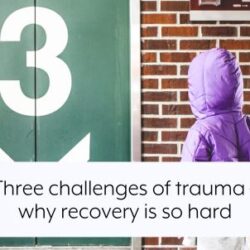
As human beings we respond instinctively and from very primitive parts of our brain when faced with overwhelming threat such as trauma. Researchers have identified five innate and automatic responses to threat which dictate much of our behaviour. Understanding this helps to explain why people respond the way they do during abuse and how many people carry these automatic reactions through the rest of life.
Many people have heard of the ‘fight or flight’ response but these are just two of five predictable patterns of responding to threatening situations, all of which can be represented by the letter ‘F’. We tend to respond on a sliding scale, depending on how serious the threat.
Friend
The first defensive strategy available to us is ‘Friend’. A newborn baby, who is otherwise immobile and defenceless, has this strategy immediately and can cry for attention and to elicit help. The strategy is to invite a caregiver to come close. After about 4-
Fight
The second defensive response, if ‘Friend’ doesn’t work, is ‘Fight’. When threatened, we might respond with overt aggression or more subtle ‘fight behaviours’ such as saying ‘no’.
Flight
The third defensive response is ‘Flight’. This involves any means of putting distance between the individual and the threat—the most obvious is running away. For both the ‘fight’ and ‘flight’ responses, the brain releases a cascade of hormones that provide increased energy to the large muscles. This is the rush of energy associated with anger (a ‘fight’ response) such as clenched fists and jaw, tension in the shoulders, and the heart-
Freeze
When the brain perceives that friend, fight and flight will not work, it elicits from the body a ‘freeze’ response. It is thought that the immobility produced by a freeze response has a number of advantages from a survival perspective, including not being detected by a predator. But the body is also flooded with ‘homemade heroin’, otherwise known as endogenous opioids, and there is a protective numbing of the body and mind in the event of inevitable harm. Being immobile prevents further injury when wounded and allows the body the best chance to survive and recover. The ‘freeze’ response is exceptionally common in child sexual abuse, as the child’s brain automatically perceives that ‘friend’, ‘fight’ and ‘flight’ will not be effective due to the abuser’s aggression and superior size and strength. Therefore the brain kicks into a ‘freeze’ response and the child is literally frozen and paralysed. Unfortunately many abusers take this response to mean consent, and many survivors feel terrible shame for not having fought back or tried to escape. However, they had no choice in the matter as this was literally an automatic body response.
Flop
If the freeze mechanism fails, the final defensive strategy is employed, which is to ‘flop’. This is a state of total submission when all the muscles go floppy and both the body and mind become malleable. Much of the ‘higher thinking’ processes in the brain are shut off at this point, and so this is the zombie-
Which ‘F’ is engaged at any point will depend on a number of factors, principally what is likely to best promote survival and what has been successful or unsuccessful in the past. It is this element of past experience which has a huge bearing on the automatic responses of abuse survivors. Even as adults they are likely to go straight into a ‘freeze’ or ‘flop’ response when faced with fairly minor current-


